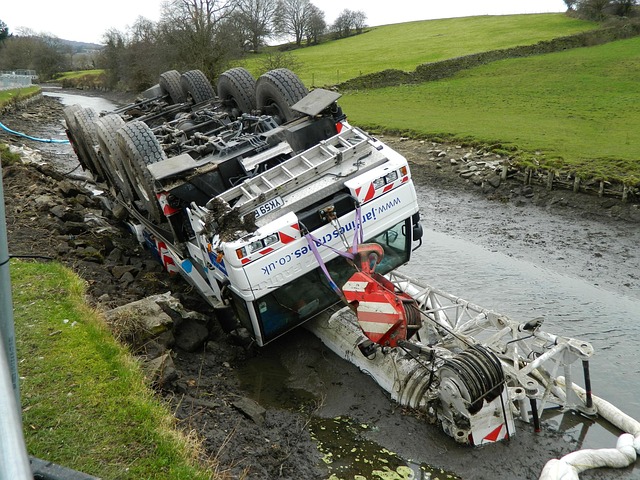Full Coverage Insurance offers vehicle owners comprehensive protection against a wide range of risks beyond basic liability. It covers collision damage, theft, vandalism, natural disasters, and legal responsibilities, providing peace of mind and financial security. However, certain exclusions exist, including negligence and specific events like war or terrorism (unless optional coverage is added). Choosing the right policy involves assessing vehicle value, driving history, and financial capacity, while comparing quotes from multiple insurers. In case of an accident, Full Coverage Insurance simplifies claims by providing guidance, compensation up to policy limits, and protection against significant out-of-pocket costs.
“Are you prepared for the unexpected? Discover the power of Full Coverage Insurance—your ultimate shield against unforeseen events. This comprehensive guide explores what full coverage truly offers, from understanding its core benefits to navigating claims processes. Learn about various damages it protects against and how it gives peace of mind.
Uncover the advantages, potential exclusions, and essential steps to choosing the right policy. Whether you’re a seasoned driver or just starting, grasp the significance of full coverage in securing your financial well-being post-accident.”
Understanding Full Coverage Insurance: What It Covers

Full Coverage Insurance is a comprehensive car insurance policy designed to protect vehicle owners from unexpected accidents and damages. Unlike basic liability coverage, which typically covers medical expenses for injured parties and property damage up to a certain limit, full coverage goes above and beyond by insuring against a broader range of risks. This includes collision damage, resulting from both minor fender benders and severe crashes, as well as comprehensive coverage for non-collision incidents like theft, vandalism, natural disasters, and even flooding.
When you have Full Coverage Insurance, you can rest assured that your vehicle is protected in various scenarios. It not only repairs or replaces your car if it’s damaged but also offers financial reassurance by covering costs associated with legal responsibilities, rental cars while your vehicle is being repaired, and sometimes even loss of personal items kept within the vehicle. This type of insurance provides peace of mind, ensuring that you’re prepared for unforeseen circumstances on the road.
Types of Damages Included in Full Coverage

Full Coverage insurance offers comprehensive protection for vehicles, ensuring that policyholders are prepared for a wide range of unexpected incidents and damages. This type of coverage goes beyond basic liability and collision policies by including several key types of damage:
1. Collision Damage: Covers repairs or replacements resulting from accidents, whether with another vehicle, a stationary object, or even natural causes like weather events. It helps offset the significant costs associated with fixing or totaling a vehicle.
2. Comprehensive Coverage (Other Than Collision): Protects against damages not involving collisions. This includes theft, vandalism, falling objects, and even damage from extreme weather conditions. It acts as a safeguard for unforeseen circumstances that can leave vehicles damaged or completely lost.
Advantages of Having Full Coverage

Having Full Coverage Insurance offers numerous advantages that go beyond simply protecting your vehicle from major accidents. It provides peace of mind, knowing that you’re shielded from a wide range of potential damages, including collision, comprehensive, and sometimes even certain types of personal liability. This is especially beneficial for drivers who face high repair costs or live in areas prone to natural disasters like floods or severe weather.
Full Coverage Insurance also streamlines the claims process, ensuring that when unforeseen circumstances arise, you won’t be burdened with overwhelming out-of-pocket expenses. It offers financial protection and can save you from significant debt, making it a smart investment for any vehicle owner seeking holistic security on the road.
Exclusions and Limitations: What's Not Covered

Full Coverage Insurance offers comprehensive protection, but it’s essential to understand what’s excluded. This type of policy typically covers a wide range of incidents, from accidents to natural disasters, ensuring that policyholders are financially secure in various scenarios. However, not all damages or circumstances are equally protected. Certain risks and events are explicitly excluded, as these vary across different insurance providers, it’s crucial to review the specific policy details.
For instance, while Full Coverage Insurance might provide financial assistance for vehicle repairs after a collision, it often does not cover damage caused by certain acts of negligence, such as driving under the influence or reckless behavior. Additionally, some policies may exclude losses resulting from war, terrorism, or specific environmental hazards like floods or earthquakes, unless an optional add-on coverage is purchased.
How to Choose the Right Full Coverage Policy

When selecting a full coverage insurance policy, it’s crucial to understand your needs and compare different options. Start by evaluating the type of vehicle you have and its value; higher-end models may require more comprehensive protection. Consider your driving history and experience—a clean record usually translates to better rates. Additionally, assess your financial situation to decide on the level of deductibles you can comfortably afford. Full coverage policies typically include collision, comprehensive, liability, and medical coverage, so ensure each component aligns with your requirements.
Don’t hesitate to shop around for quotes from various insurance providers. Online tools and comparison sites make this process efficient. Read policy details carefully, paying attention to exclusions, limitations, and what’s covered in case of accidents or damage. Remember, the right full coverage policy should offer peace of mind while aligning with your budget and protective needs.
Claims Process and Steps to Take After an Accident

After an accident, the claims process can seem daunting, but with full coverage insurance, you’re better equipped to navigate it. The first step is to notify your insurance provider as soon as possible. Provide them with details of the incident, including the date, time, location, and any relevant information about the other party involved. Take photos of the damage to your vehicle(s) and keep records of all communications related to the claim.
Next, gather essential documents such as your policy details, proof of identity, and any medical reports if injuries were sustained. Your insurance company will guide you through the rest of the process, which typically involves filing a formal claim, providing a detailed account of the accident, and possibly attending an appraisal or inspection. Stay in regular contact with your insurer to ensure your claim progresses smoothly, and remember that full coverage insurance can provide peace of mind, offering compensation for repairs or replacements up to the limits specified in your policy.
Common Scenarios Requiring Full Coverage Protection

In today’s world, where accidents can happen at any moment and unexpected damages can arise, having comprehensive Full Coverage Insurance is an essential step towards financial security. This type of insurance protection is designed to shield individuals from incurring significant costs associated with unforeseen events. Common scenarios that often require full coverage include property damage caused by natural disasters like floods or wildfires, as well as accidents involving vehicles, which can lead to expensive repairs or total loss.
Additionally, full coverage insurance packages typically extend protection against theft, vandalism, and even accidental damage to personal belongings. For instance, if your home suffers water damage due to a burst pipe or an electrical fire, full coverage insurance can help with the repair or reconstruction costs. Similarly, if you’re involved in a car accident, this insurance ensures that not only your vehicle but also any third-party liabilities are covered, providing peace of mind and financial protection.
